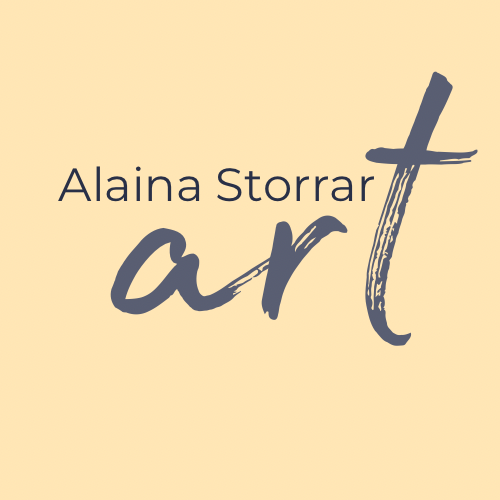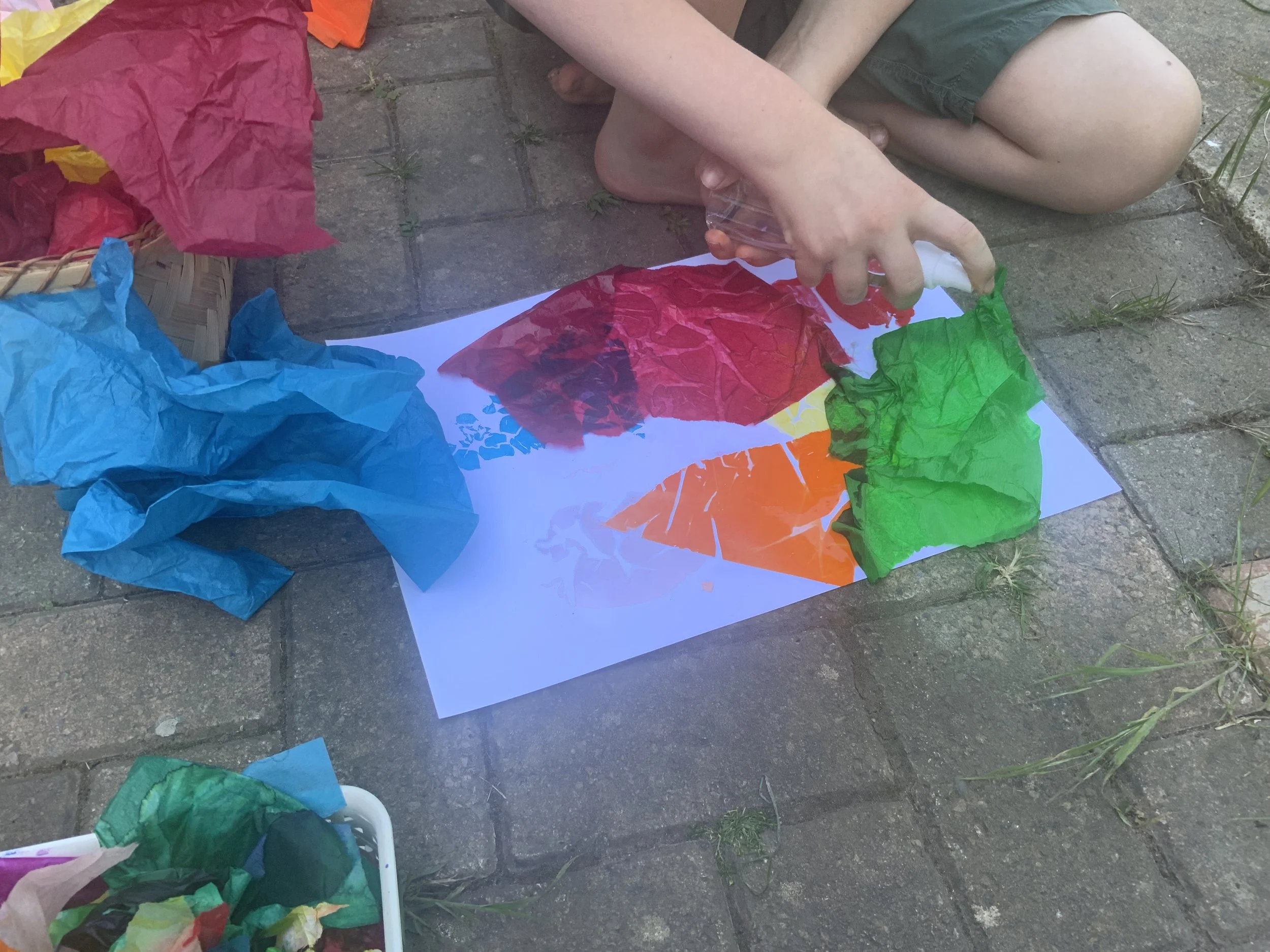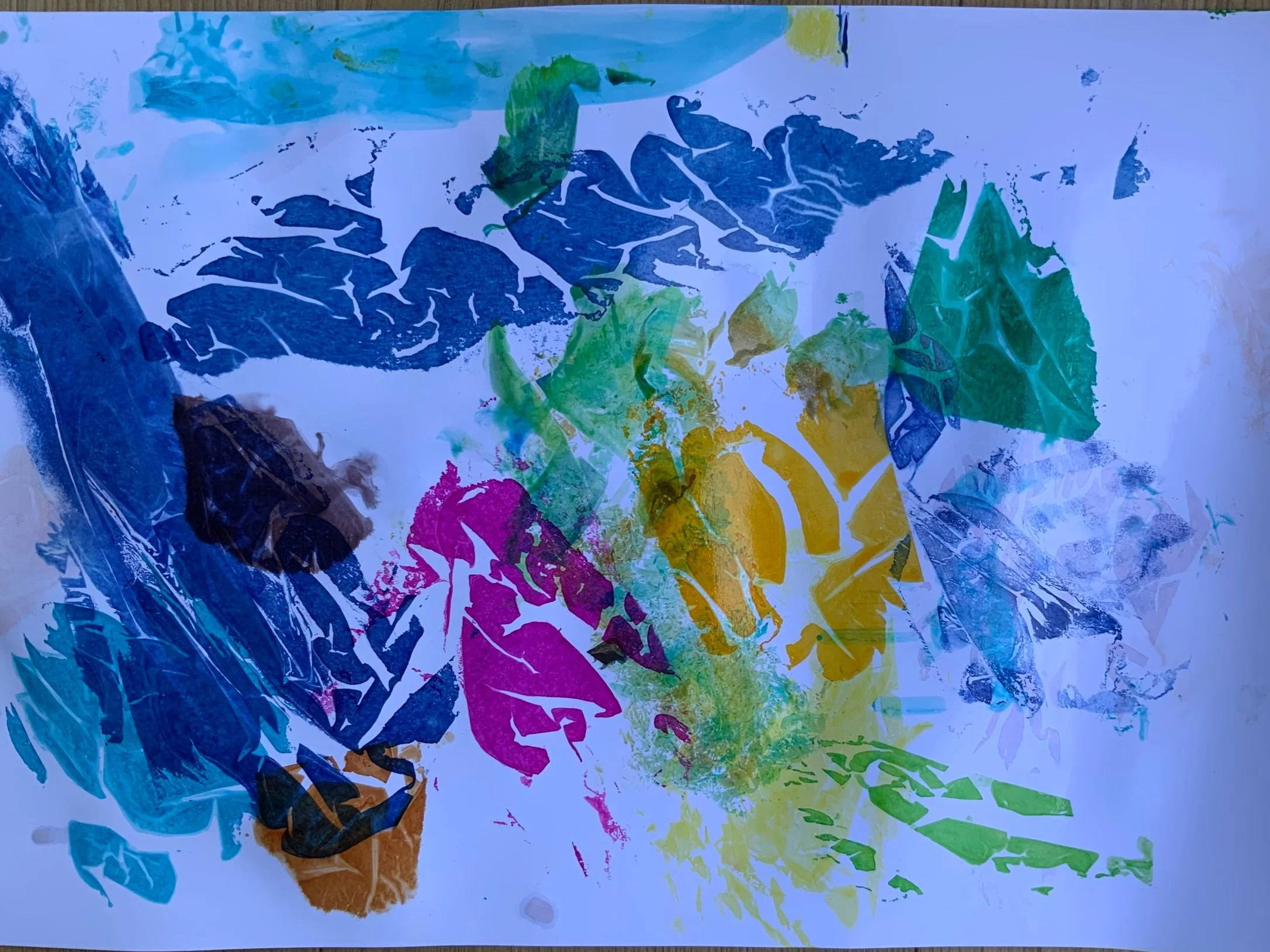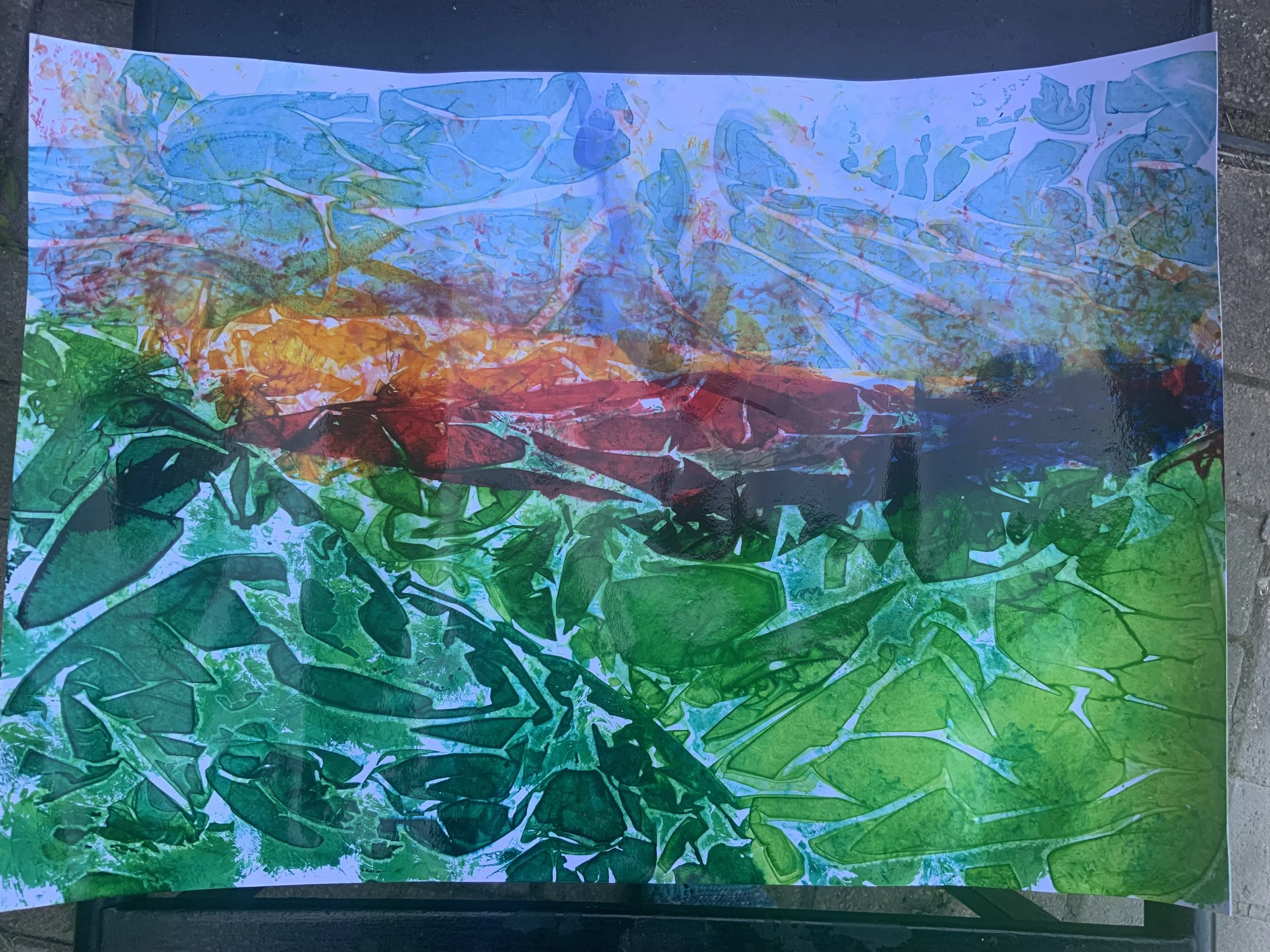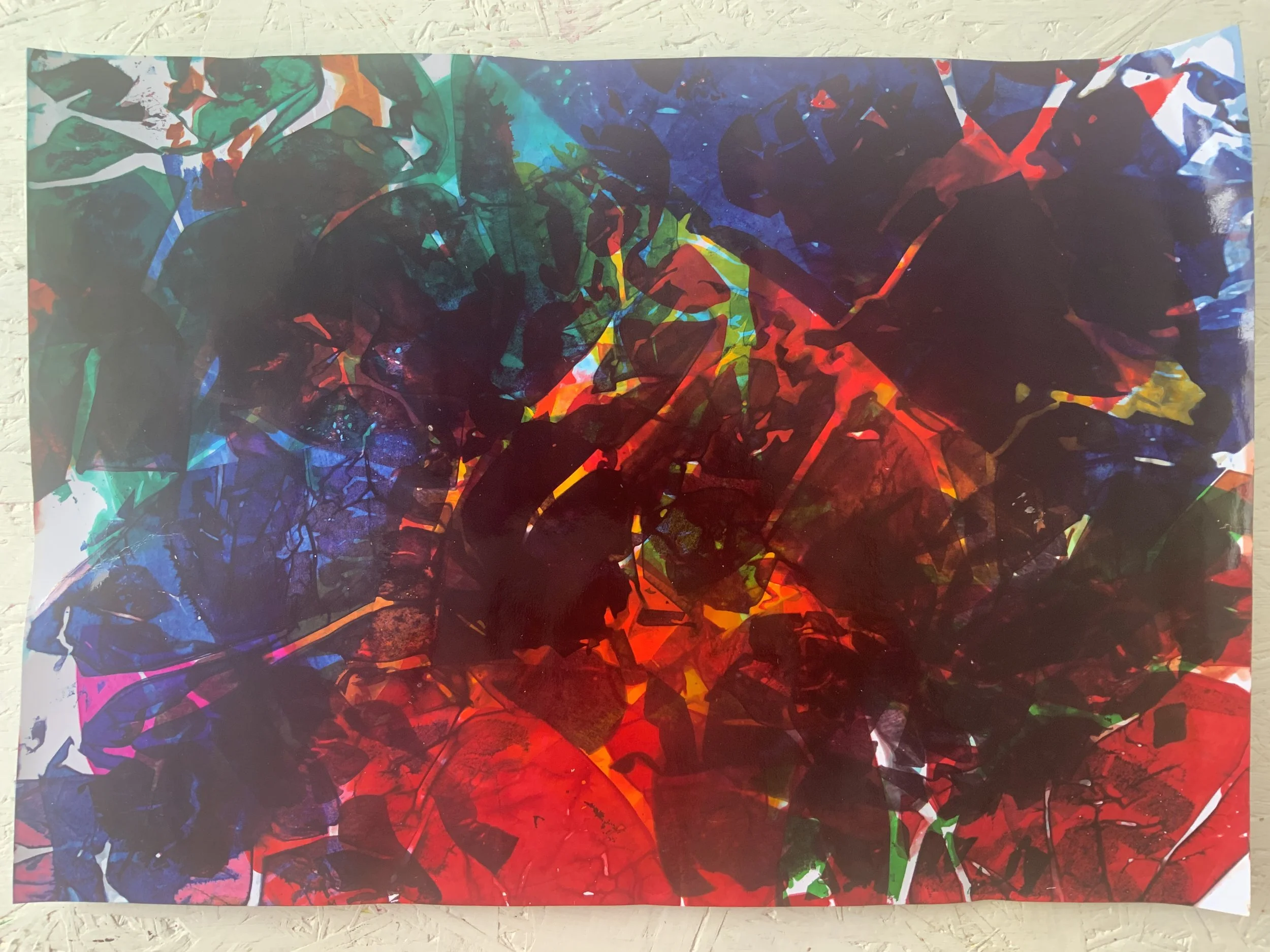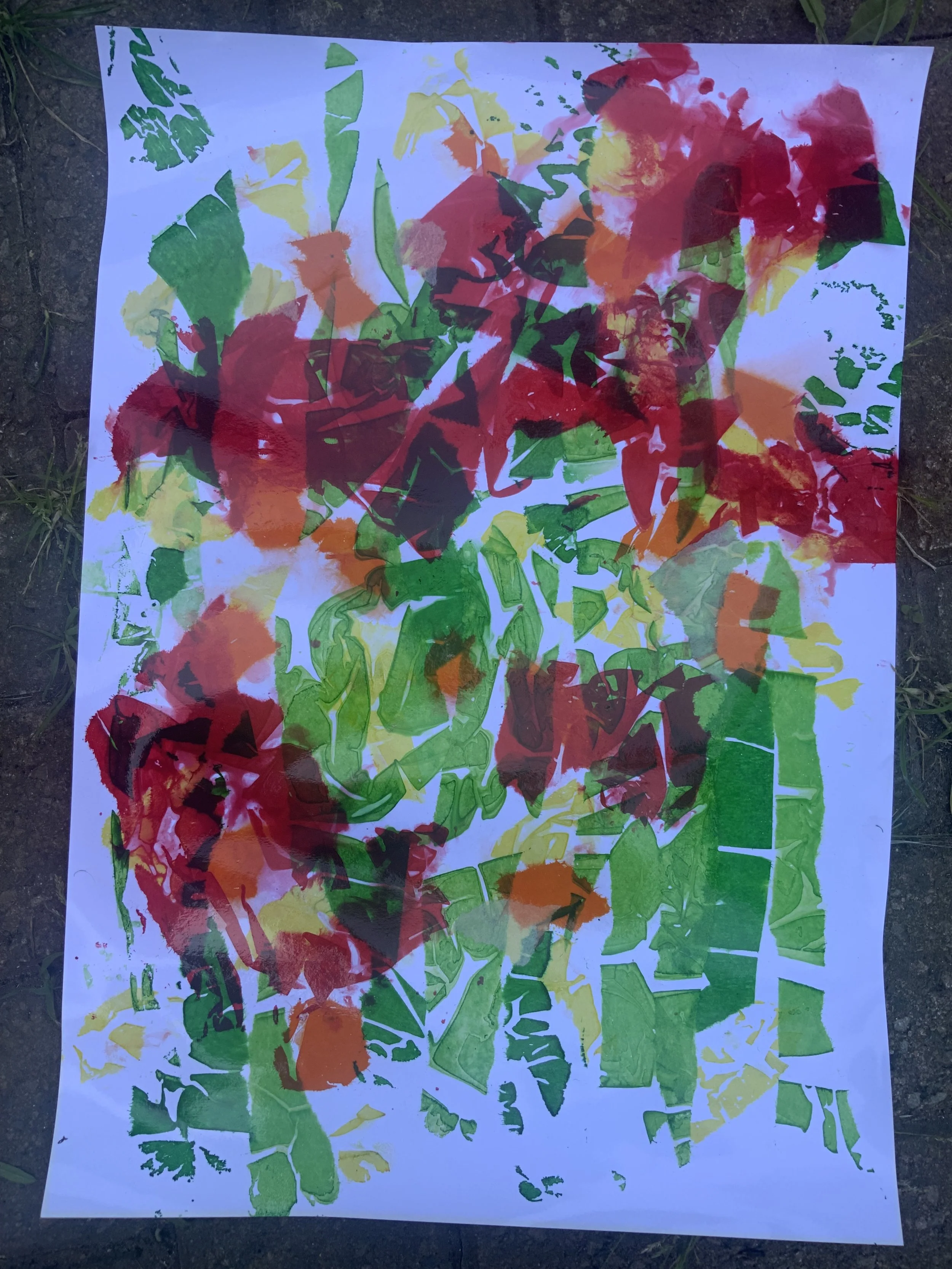How I forgot about, and remembered, the value of process art
Last week I ran an art club for under-11s based on the theme of butterflies. The attendees were two seven year olds and a nine year old, three bouncy, chatty, interested children. I planned a lovely art-making experience involving collage gardens with painted 3D butterflies, the sort of art that will probably look good who ever makes it. The children dutifully coloured their butterflies and and stuck and painted their gardens.
Pretty pink and blue flowers and butterflies by S, aged 7
They liked it, but when asked if they wanted more butterflies or to make another garden, the answer was ‘no’. Not only that, the whole activity took them half the time I had expected. So now I had three boisterous under-11s in need of entertainment…
A wildflower garden by S, aged 9
My mistake: I had fallen back on the idea of making a ‘thing’, as opposed to making art. The collage gardens with butterflies were my idea, not the children’s, and so they had no reason to invest their attention on it for longer than absolutely necessary. Don’t get me wrong, the gardens and butterflies were very pretty and the children should be pleased with what they created. But this activity was not open enough for them to explore and develop into something that was their own. I was kicking myself for forgetting everything I know about both child development, and the meaning of creativity.
Bright butterflies with a blossom tree by L, aged 7
Wracking my brains for something bright and exciting, and maybe vaguely reminiscent of butterflies, my eye landed on the pack of A3 photo paper sat on a shelf. Thank goodness for a well-stocked studio of stuff I find hard to throw out! I passed each child a piece of photo paper, pulled out my stash of tissue paper, and a water spray each.
One quick demo of what these materials did when put together, and they were off. This simple activity is a perfect example of process art: creativity that is not led by anything except the materials and the effects they create.
T, aged 10, demonstrating how to spray water on the tissue paper
Tissue paper exploration by S, aged 7
Some people might say they prefer the gardens, but it is worth looking closer and watching how the two activities played out. Making the gardens, the children followed instructions. They used a little paint, but only to ‘colour in’. They used scissors, but they did not take time to carefully cut, only separate the images they wanted from a page. Neither of these are particularly challenging skills for the age group. Now look at the tissue paper art. They explored a new material to discover what it can do, both in the way they were shown and in more creative ways they found for themselves. They noticed how the colours changed when layered over each other, and combined the new material with others that they knew. They solved problems, such as how to make a stencil work with wet tissue paper, through trial and error, deep thought and discussion. So many skills, and all transferable to other activities and challenges they might encounter.
Tissue paper exploration by L, aged 7
The garden activity was boring. The tissue paper activity was process art.
I have been curious to discover as to how older children and adults, who may have developed preconceived ideas about art making, might respond to process art. I believe this is a form of creativity that is just as valuable as being able to observe and draw accurately, but many adults do not recognise its importance in art making. I had a chance to test how well this sort of activity might hold the interest of adults at the weekend when my cousin visited. I explained the process, handed out materials, and off we went.
Tissue paper exploration by E, aged 31
To my surprise, my teenage son, who never wants to make art these days, asked to have a go. And then my ten year old, who does not usually like to join in with other people’s activities, settled down as well. It was clear to me that this kind of process art was a success!
Tissue paper exploration by T, aged 10
So, what have I learned? I now know that in order for my Art Clubs to be a place for real creativity, I need to remember the value of process art. The parents of the children who attended told me how much they liked the freedom to explore I provided for their children. They were not looking for prescribed image making and highly controlled use of resources, they enjoyed the excitement their children had in making their own discoveries and controlling their own art making. This needs to be my aim going ahead: not to drop the structure of a theme completely, but to use it to expand opportunities for process art.
Tissue paper exploration by me, aged 42
